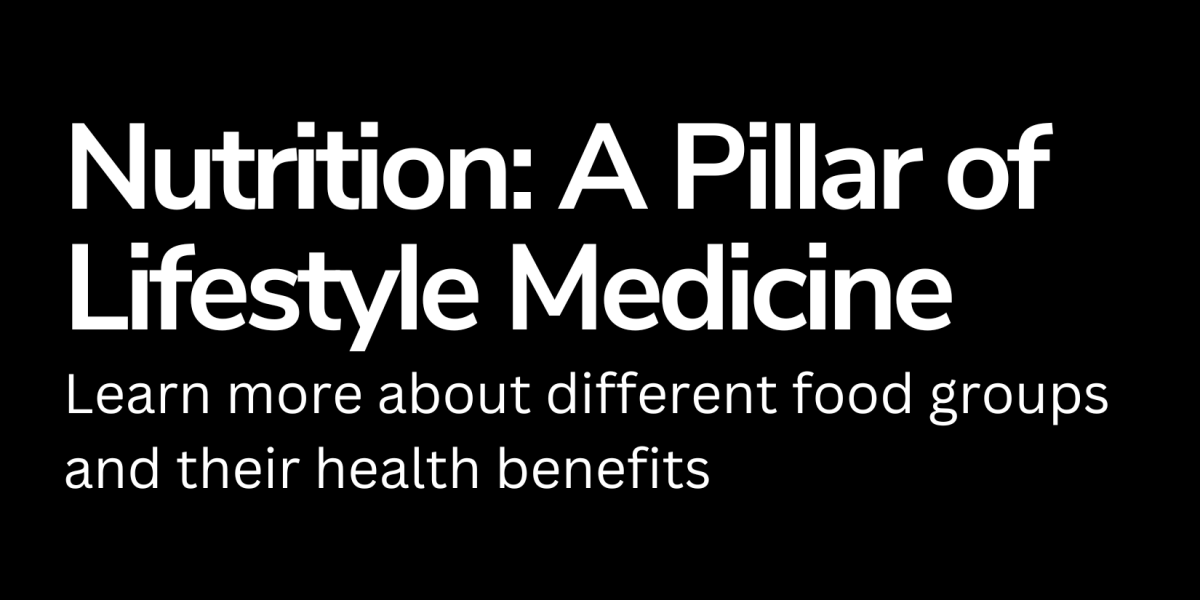An eating plan based largely on a variety of minimally processed vegetables, fruits, whole grains, legumes, nuts and seeds is recommended as part of MFHT’s Lifestyle Medicine Program. Eating whole plant foods is a great way to get in more nutrition with less harm and is one of the best ways to prevent, treat and even reverse many chronic diseases.
The Mediterranean style of eating, which is based on foods that are traditional to countries that surround the Mediterranean Sea, is about enjoying healthful foods as a way of life. Not only is this way of eating tasty and flavorful, it also encourages consuming more whole and plant-based foods and is associated with many physical and mental health benefits.
See below for information about the different food groups that align with the Mediterranean style of eating.
Fruits & Vegetables
Fruits and vegetables play an important role in our diet. Canada’s Food Guide recommends that we eat plenty of fruits and vegetables (fresh, frozen or canned) every day – including a variety of colours and textures to fit your taste!
Health benefits of fruits & vegetables
- A diet rich in fruits and vegetables may reduce your risk of stroke, heart disease and high blood pressure
- Fruits and veggies (fresh, canned or frozen) both have important nutrients such as:
- Fibre
- Vitamins
- Minerals
- As a great source of dietary fibre, fruits and veggies support a healthy gut, keep us full longer and can help prevent digestive problems such as constipation
- Since no single fruit or vegetable contains all nutrients, it is important to eat a variety every day!
Tips to help you eat more fruits & vegetables
- Eat the rainbow – a variety of fruits and veggies will help pack your meals with nutrients!
- Keep cut up fruits and veggies in the fridge for a quick and healthy snack
- Add greens such as spinach, kale or avocado to smoothies
- Keep a bowl of fresh fruit on the counter as an easy grab-and-go snack
- Add fruit to oatmeal or low-fat yogurt
- Wash, cut and store extra vegetables in the fridge or freezer when meal prepping
- Add fresh fruit to salads
- Add fresh or frozen fruit to baking
- Substitute raw veggies for crackers or chips
- Add veggies to your favourite recipes (ex. broccoli in mac & cheese)
Eating fruits & vegetables on a budget
- Check your fridge and freezer before shopping
- Check flyers or mobile apps for sales or coupons
- Stock up on your favourites when they are on sale and freeze them
- Make a plan: This will help make sure you use what you buy
- Choose frozen or canned options – they are just as nutritious and often cheaper
- Check out the clearance section – veggies that have seen better days can be added to soups or stews and overly ripe fruit can be used to bake with or added to smoothies.
- Consider the season – fresh vegetables and fruit are usually less expensive when they are in season.
Whole Grain Foods
Canada’s Food Guide recommends choosing whole grain foods most often. Not only are whole grain foods versatile and tasty, they also have many health benefits. Reading food labels is the best way to spot whole grains.
Health benefits of whole grain foods
Whole grain foods have important nutrients such as: fibre, vitamins & minerals.
High fibre diets can help:
- Improve cholesterol levels
- Lower insulin levels
- Lower blood pressure
- Feel full to support with weight loss or management
High fibre diets can lower the risk of:
- Heart disease
- Stroke
- Type 2 diabetes
- Colorectal cancer
Whole grains vs. refined grains
Whole grain foods are a more nutritious choice than refined grains (e.g. white rice, white flour and cream of wheat) because whole grain foods include all parts of the grain. Refined grains have some parts of the grain removed during processing.
How do I know if a product is whole grain? Look for the word “whole grain” on the label and in the ingredient list. Many foods containing whole grains will have the words “whole grain” followed by the name of the grain as one of the first ingredients (e.g. whole grain oats or whole grain wheat). Products labelled with the words “multigrain,” and “whole wheat” are not necessarily whole grain.
Tips on how to add more whole grains to your diet
Enjoy a variety of whole grain foods every day, such as:
- quinoa
- whole grain pasta
- whole grain bread or crackers
- whole oats or oatmeal
- whole grain brown or wild rice
Try healthier ways to prepare your whole grain foods by:
- leaving out or reducing the amount of salt added during preparation
- limiting the amount of sauce or spreads you add
- adding vegetables, vegetable oils, spices and herbs to enhance flavours
Protein Foods
Protein is an essential nutrient that keeps your body functioning well. Proteins are part of every cell in your body and are needed to build and repair muscle, tissue, skin, nails and hair. Protein also helps build hormones and enzymes. Including a variety of protein sources at every meal will help ensure you get enough protein and other important nutrients. Consider choosing protein foods that come from plants more often. Plant-based protein foods can provide more fibre and less saturated fat than other types of protein foods. This can be beneficial for your digestive system and for promoting heart health.
Tips for healthy protein choices
According to Dietitians of Canada:
- Adults over the age of 19 need 0.8 grams of protein for every kilogram of body weight
- Ex: if you weight 68 kg (150lbs) then you need about 55g of protein per day
- Special consideration is needed for pregnant/breastfeeding women, some athletes, older adults and people with certain health conditions
- Eating protein from a variety of sources will help you get key nutrients such as fibre, calcium, iron and B12
- Plant-based protein sources are beneficial in improving heart health and the digestive system
- Proteins should be included at every meal – aim for 1/4 of your plate to come from protein
- Please talk to a Registered Dietitian about the amount of protein that is right for you!
Different types of protein
Animal-Based Protein Sources
- Lean meats & poultry: beef, pork, wild game, turkey, chicken
- Eggs
- Fish & shellfish: pickerel, shrimp, salmon, trout, sardines etc.
- Low-fat dairy products: milk, yogurt, lower sodium cheese
Plant-Based Protein Sources
- Nuts & seeds: peanuts, almonds, cashews, nut butters, sunflower seeds, hemp hearts, chia seeds
- Beans, peas & lentils: brown, green, red lentils; chickpeas, split peas, black beans, kidney beans
- Fortified soy beverages, tofu, soybeans and other soy products
Ways to add more plant-based protein to your diet
- Whole-grain cereal or oatmeal (1/4 cup = 3g/protein) with almonds (1/4 cup = 8g/protein)
- Make your own protein bars for an easy snack or grab-and-go breakfast (1 bar = 7 g/protein)
- Add chickpeas, lentils or black beans to soup or salad (3/4 cup beans = 11g/protein; 3/4 cup lentils = 13g/protein)
- Cook a big bowl of bean-filled chili with plenty of veggies (1 servings = 14g/protein)
- Try quinoa salad instead of pasta (1/2 cup of quinoa = 3g/protein)
- Whole-grain crackers with cheese (50g cheese = 12g/protein)
- Afternoon snack: Peanut butter (2 tbsp = 7g/protein) on whole-grain bread
- Tofu (3/4 cup = 16g/protein) stir-fry with lots of veggies
For recipe ideas, visit Cookspiration.com.



